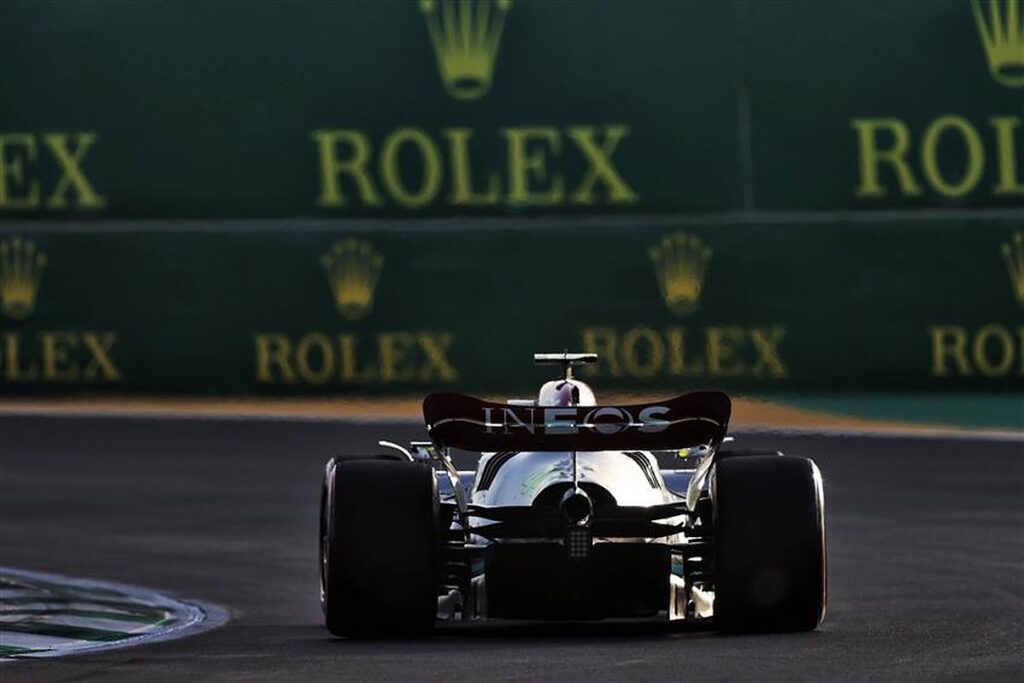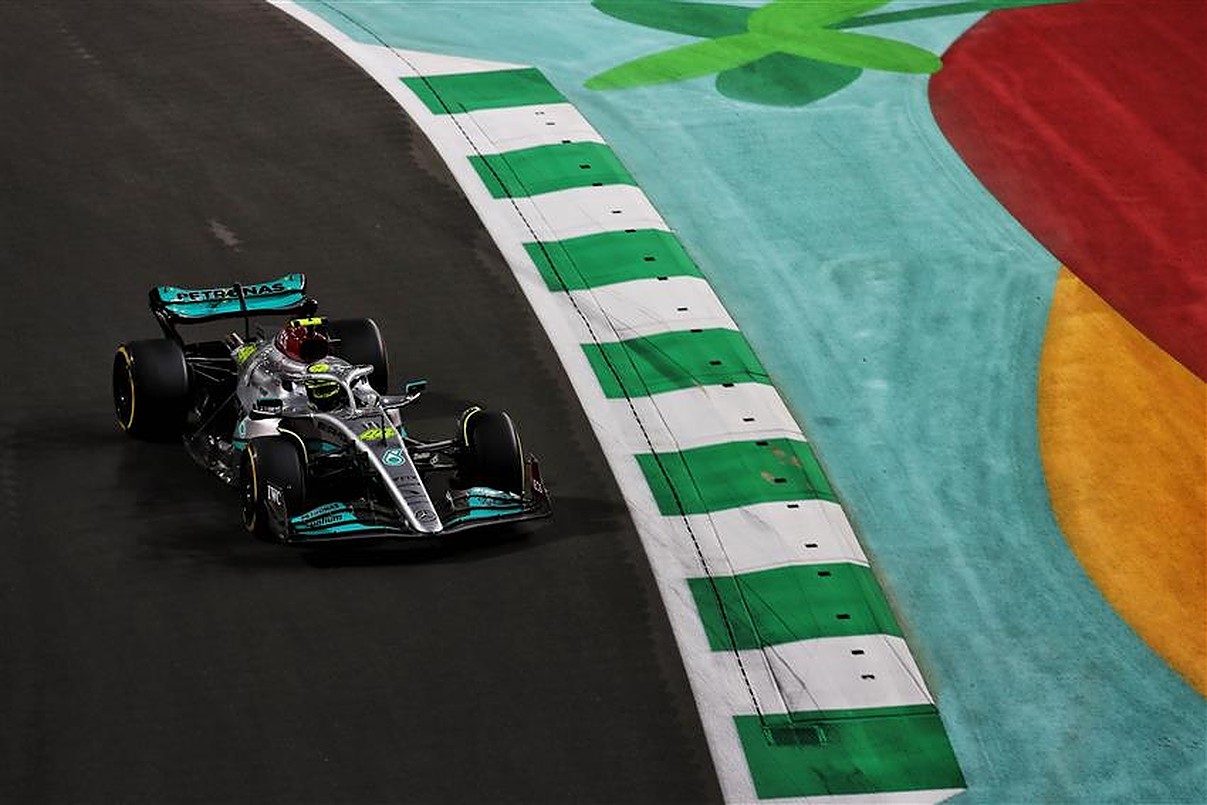Toto Wolff has insisted that he does not wish to pin the blame for Mercedes’ lack of performance solely on one aspect of the car, affirming that there are multiple areas of weakness.
Mercedes have been on the back foot since the beginning of 2022 pre-season testing.
The Silver Arrows looked off the pace in free practice at the 2022 Bahrain Grand Prix, leading both Sir Lewis Hamilton and George Russell to suggest that Ferrari and Red Bull had surpassed them for pace.
READ: McLaren CEO slams Wolff and Horner for ‘modifying the outcome of races’
They were proved right as Hamilton qualified fifth, seven tenths of a second adrift of Charles Leclerc’s pole time, with Russell a further second back in ninth.
They were given some temporary respite in the form of a podium for the 37-year-old after Red Bull’s double reliability failure, but no such luck awaited them in Saudi Arabia.
The seven-time world champion was eight tenths slower than his compatriot after “minimal changes” to the set-up by his engineers, and he ended qualifying in 16th while the 24-year-old claimed sixth.
Hamilton recovered to finish the race 10th after losing out to Haas’ Kevin Magnussen towards the end, while Russell ended the grand prix over half a minute adrift of race winner Max Verstappen in fifth place, even after a Safety Car halfway through proceedings.
Due to the less bumpy nature of the Jeddah Corniche Circuit compared with the tracks in Sakhir and Barcelona, Mercedes believed that their issues with “porpoising” would be less prominent last weekend, so they were surprised to learn that it is still very much at the forefront.
“We assumed that there would be less porpoising at Jeddah because the track is smoother. We were wrong,” an engineer told Auto Motor und Sport.
“We still don’t fully understand what factors trigger the phenomenon. It’s an ongoing learning process.”
One thing the Brackley squad can take heart from is they had good straight-line speed in Jeddah.
It is estimated they were around 11kph slower than the Honda-powered Red Bull, but between 4-9kph quicker than Ferrari.
This is to be taken with a pinch of salt because Ferrari, by their own admission, ran more downforce in the second round of the season to capitalise on the corners in their battle with Red Bull, but it would certainly appear that the main bulk of the eight-time constructors’ champions’ problems stems from their aerodynamic deficiencies.
“Only when we’ve solved our porpoising problem can we take care of the rest of the vehicle. And there would be so many things to take care of,” said Russell.

One of the more simple solutions to the car hitting the ground is to run the car at a higher ride height, but this surrenders a considerable amount of lap time so it would appear to be a temporary answer to one of the more vexatious problems Mercedes have encountered in recent years.
Wolff confirms that Mercedes’ 2022 car is lacking in multiple areas.
“We didn’t do the best job in various areas. It’s difficult to estimate how far behind we would be if we could drive our car lower,” he explained.
“There are deficits that are bigger than the engine.”
Having all but erased their sidepods ahead of this season in an attempt to reduce drag, Mercedes also ran a skinnier rear wing in Saudi Arabia to improve their performance on the straights, but they were still comfortably out-performed by the Haas, which was over three percent slower on lap time than the Mercedes last year.
“It’s all closely related. The engine accounts for at most one to two tenths of a lap time,” said a Mercedes engineer.
This comes as a surprise, but the engineer explained why they are losing so much time despite running less wing in Saudi Arabia.
“Don’t look at the surface of the car and the rear wing flap. This is misleading. Drag is mainly generated by the skin of the rear wing and the lower wing in the rear. And we’re way up there,” they divulged.
“Every week you go in circles with a problem, the rest of development stops.”
READ: ‘A big hit’: Jenson Button concerned about Lando Norris
Wolff would of course like to find a fix for the problems his team are facing, but he warns that they must avoid being swallowed up by the chasing pack in their pursuit of Ferrari and Red Bull.
“You can’t make up for the deficit we have until the next race. We have to work forward and protect backwards and must not fall into the trap of making predictions today about where we will be in the summer,” he affirmed.
The next race in Melbourne features deeper braking zones at Turns three and 13, as well as a flat-out section at Turns nine and 10 where a slow chicane used to exist.
Turns six and seven have also been opened out to allow for a more following run, meaning that the Albert Park Circuit is more of a power track than it has ever been, so there will be intrigue around the efficiency of Mercedes’ car there compared to Ferrari and Red Bull, who have both looked strong in the corners and on the straights.

